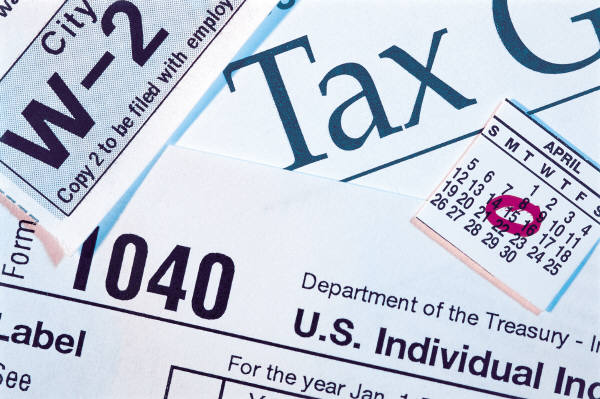
Every year, Free Hot Water provides our customers and consumers with links to the three main IRS tax forms used to apply for the 30% solar investment tax credit. The three main 2011 IRS solar investment tax forms are below, as well as some basic tax guidance for consumers and businesses who have installed solar PV and solar water heating systems in 2011.
IRS Tax Forms for Solar and Energy Efficiency Tax Credits
- Here is the 2011 IRS Form 5695 for residential systems. Submit it with your 2011 taxes (by April 17, 2011).
- On the 2011 1040 form, the residential energy tax credit (from Form 5695 above) is claimed on line 52.
- For businesses, use the 2011 Form 3468.
Calculating the 30% Tax Credit
As discussed in previous years, there can be some confusion about how to apply the 30% solar investment tax credit. Some customers multiply the 30% by the gross cost of the installed system, while others calculate the 30% times the cost after the cost of any state or utility rebate has been subtracted.
So which formula is correct? The answer depends on whether you’ve bought your solar system as a business or a homeowner, or whether or not you’ve directly received any rebate cash.
To clarify, below is another recap of what we know. However, please confirm all of this with your own tax consultant. We’re basing this information on guidance from the Solar Energy Industry Association (SEIA).
For Businesses
- If you are a commercial business that installed a solar system in 2011, you must calculate the 30% from the gross amount before any state or a utility rebates. However, as a business, you must also report any rebate amount received as income.
- Thus, any rebate money received by the state must be reported and will be taxed at the prevailing rate.
- For example. If your gross solar thermal or solar PV system cost is $50,000, you will receive a $15,000 tax credit that you can use toward paying your Federal income taxes. If you received a $5,000 state rebate, that must also be reported as income.
- This $15,000 in the above example is not a tax deduction, but a tax credit. Think of that $15,000 as if you’ve received an IRS Gift Card that you can use toward paying your next tax bill.
- Tax credits are thus far not refundable, however, so if you owe less than $15,000, as in this example, the remaining solar tax credit can be carried over to the next quarter’s tax bill.
For Homeowners
- If you are a solar water heating homeowner, you must calculate the solar 30% Federal Tax Credit after deducting any State or Utility rebates. Perhaps this sounds unfair, compared to businesses, but wait. Here’s the bonus:
- Residents don’t have to report any State or utility solar rebates as income. Instead, it is viewed as a “reduction” in cost. That’s sort of like a sale, but not really.
- For example, if your solar hot water or solar thermal system cost $5,000 installed, and then you receive a $2,000 rebate, then your “tax basis” would be $3,000. Thus, your Federal tax credit would equal $900 (30% x $3000 = $900.)
- As with commercial systems, this $900 is not a tax deduction, but a tax credit. So it’s as if you’ve received an IRS Gift Card of 900 bucks that you can use toward paying your tax bill.
- However, tax credits are not currently refundable, so if you owe less than $900 in this example, the difference can be used toward the next quarter’s tax bill.
Other things to keep in mind:
- Whether you’re a home or business, you can only claim the 30% Federal Investment Tax Credit for the year that your solar was “placed in service.” In other words, you should claim the tax credit for the 2011 tax year if your solar system was up and running in 2011. If you got it installed in February 2012, then the tax credit must be filed with your 2012 taxes…unless you’re filing for a 1603 Treasury Grant in lieu of the investment tax credit. Read on…
- The1603 Treasury Grant Program has expired as of December 31, 2011. Commercial businesses may be eligible to receive this grant (cash!) instead of the investment tax credit. Home owners do not qualify, but businesses do. More info about grant qualifications here and safe harbor provisions here, if you haven’t completed installation by the end of 2011.
- Solar advocates in Congress are attempting to revive the Treasury Grant Program. As of March 14, they’ve been unsuccessful, but they are continuing their efforts.
- Business may also qualify for other tax benefits, such as Modified Accelerated Cost-Recovery System (MACRS) + Bonus Depreciation (2008-2012). Under this program, federal Modified Accelerated Cost-Recovery System (MACRS), businesses may recover investments in certain property through depreciation deductions. The MACRS establishes a set of class lives for various types of property, ranging from three to 50 years, over which the property may be depreciated. Currently under the MACRS, solar electric and solar thermal technologies, including solar hot water systems, are classified as having a 5-year life, allowing the recovery to be captured over a 5-year schedule. Once again, the solar water heating system (or other eligible technology) must have been “placed in service” between 2008 and 2012.
- Don’t forget that you may qualify for city, state, or utility tax benefits too. The best resource to confirm these tax breaks in your state are at http://www.dsireusa.org/solar.
We hope this information helps, however, please remember that we are not tax advisers, so always consult with your tax expert before applying the above.
Regardless of the tax breaks, we want to thank you for going solar. Please share this information with your friends and other businesses associates.





















Pingback: Cost Solar Energy | Alternative Energy Facts